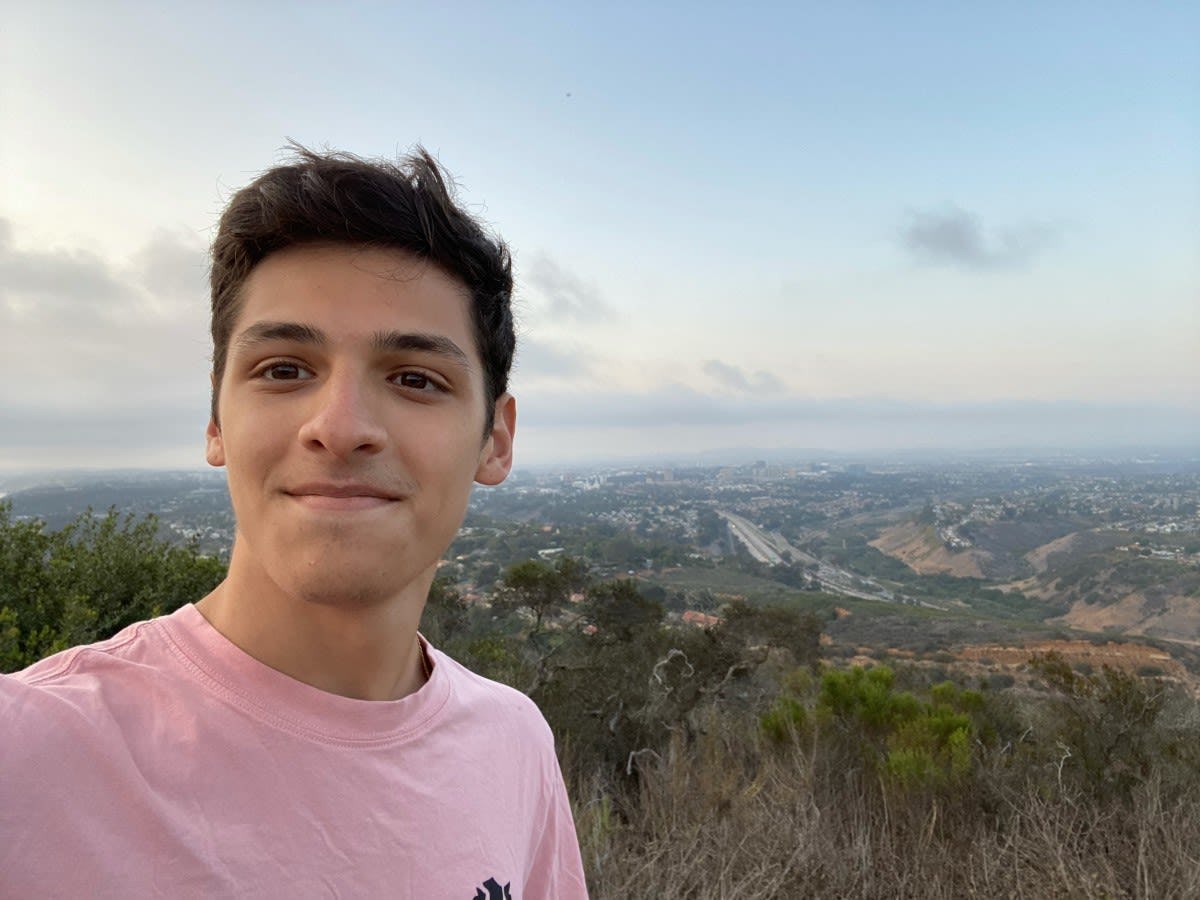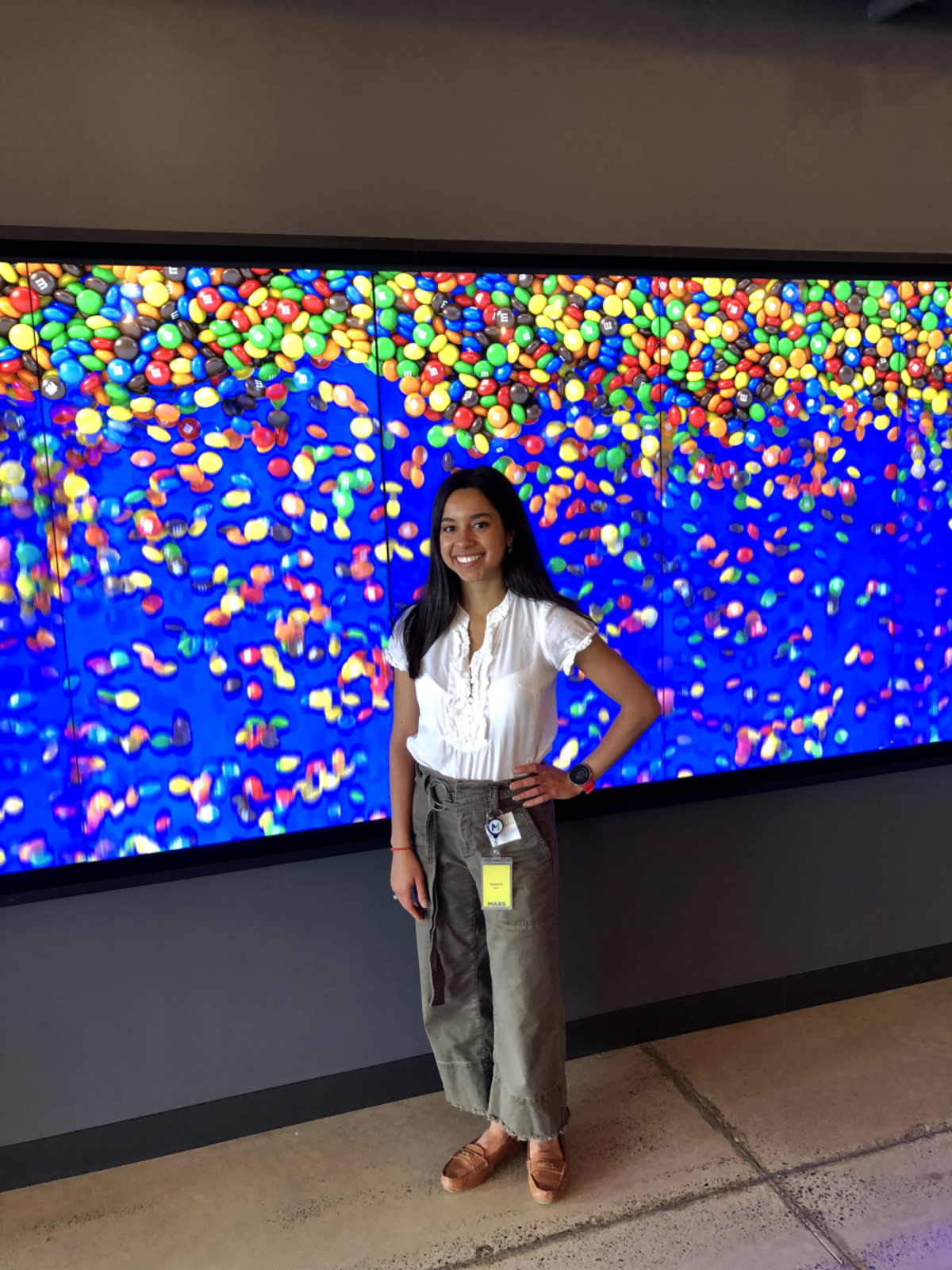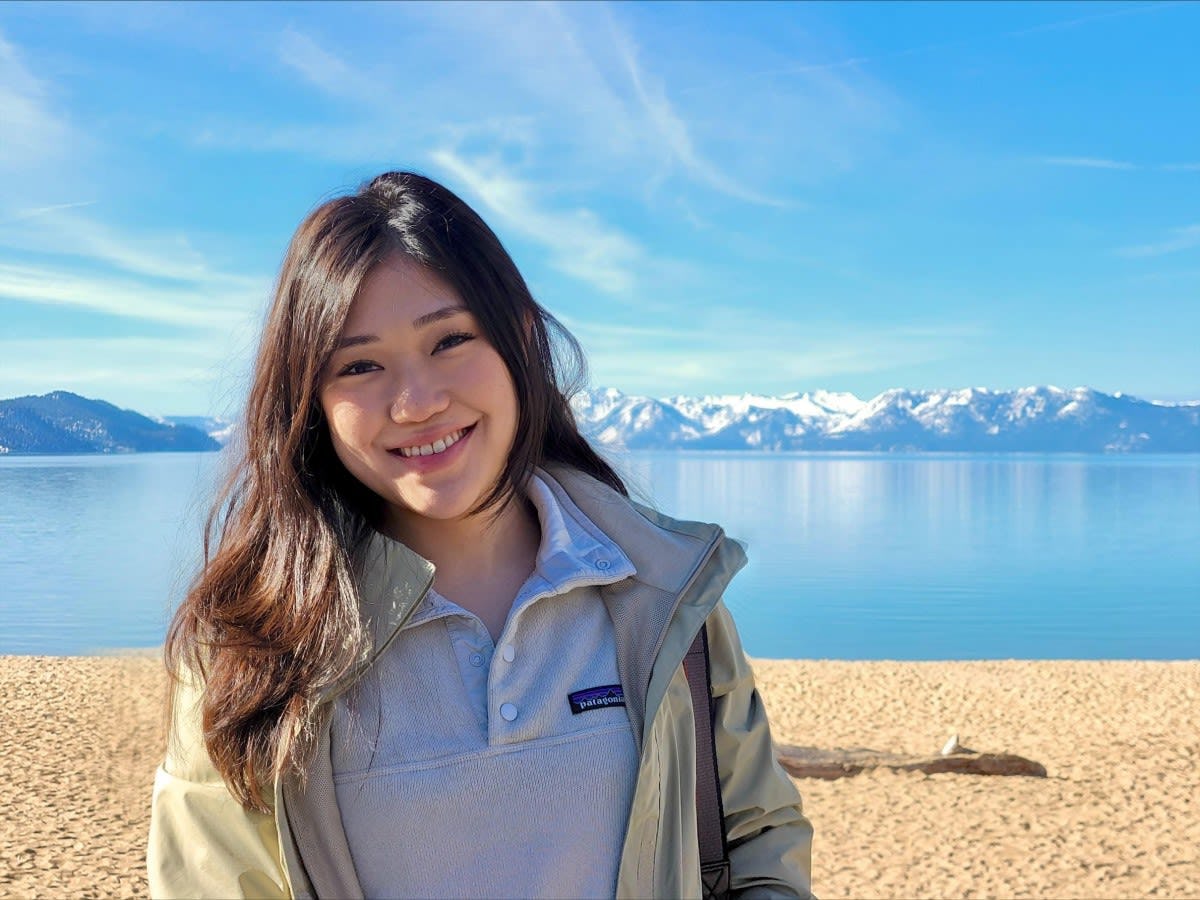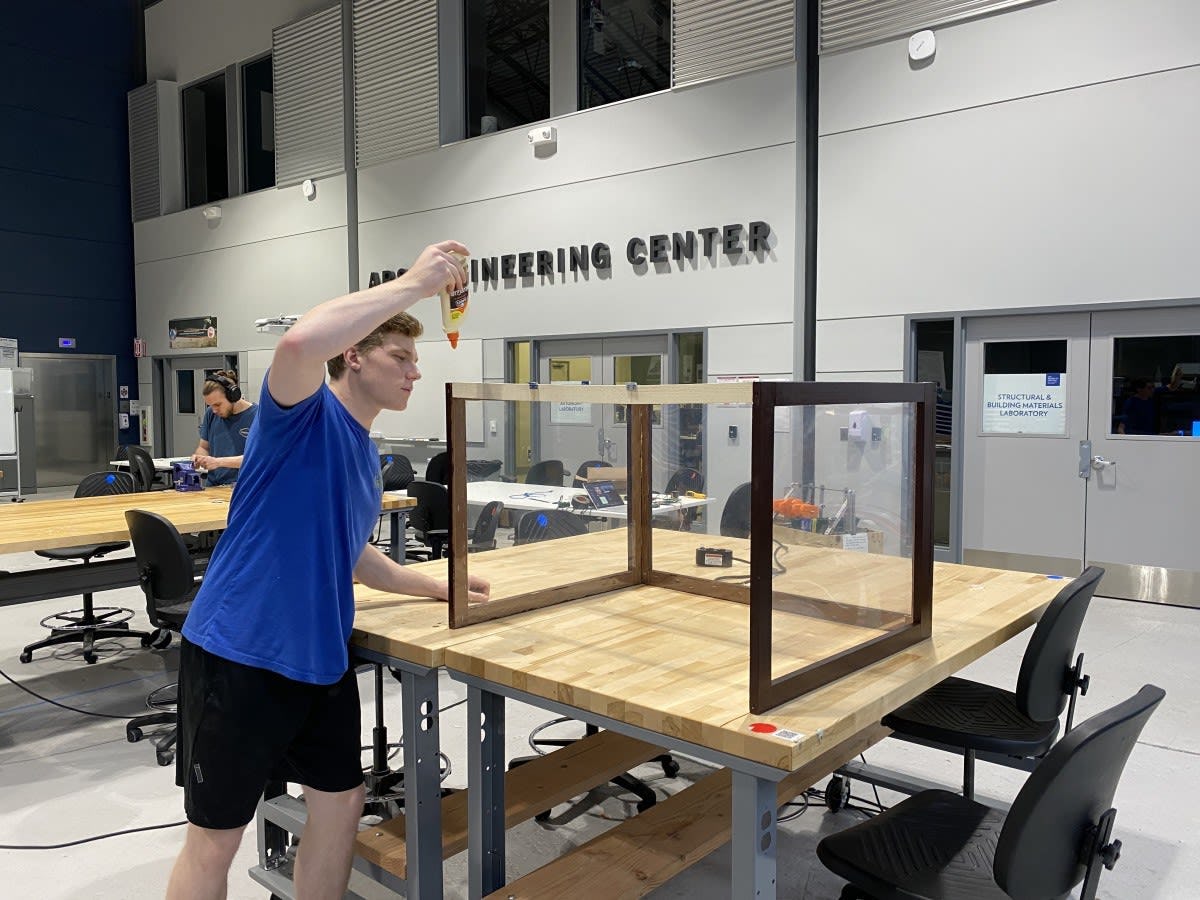Seniors Design Intelligent Greenhouse to Grow a More Sustainable Food Supply
Developed by a team of software and computer engineers, IntelliVeggie combines a smart sensor network with AI harvestability and disease-detection technology to support the small farmer
The state of today's global agriculture system is grim.
Ninety percent of the world's farms are small and family-owned, producing 81% of crops globally. Yet 15% of those farms have closed in the last decade, while more than half of all American farmers have lost money continuously since 2013.
Arable land, meanwhile, is quickly being diminished by large-scale industrial farming practices. With 70% of the world's topsoil already destroyed, studies estimate only 60 more years of farmable land remain.
To help small farmers shore up the global food supply, software engineering majors William Baltus '22, Jon Cucci '22 and Grace Miguel '22 and computer engineering majors Julia Chung '22 and Justis DiBattista '22 have joined forces to develop a high-tech, low-cost solution called IntelliVeggie.
IntelliVeggie is a modular, automated greenhouse that leverages smart-sensor technology and machine learning to improve agricultural yield and efficiency, while helping farmers make better, data-driven decisions.
Equipped with AI-enabled harvestability and disease-detection features, the greenhouse can extend growing seasons, improve crop quality and quantity, and reduce waste, resource consumption and labor costs.
With 35% of all crops lost to rot or infection, the significance of the AI features alone, team lead Baltus said, "cannot be overstated."
"With this greenhouse, small farmers can produce more produce at a faster rate for cheaper," Miguel said, "and there would be more of what consumers want at the supermarket for a more competitive price."
Advised by electrical and computer engineering teaching professor and Associate Chair for Undergraduate Studies Kevin Lu, the seniors say IntelliVeggie would make small farmers more competitive with and more protective against industrial agriculture, thereby building more resilience into the food supply as a whole.
"By helping small farmers practice environmental stewardship, they'll ensure a more stable and sustainable status quo," Baltus said.
Designing an intelligent greenhouse
Constructed of polyethylene plastic and aluminum beams, the IntelliVeggie greenhouse contains an embedded sensor network that monitors interior environmental conditions, including air temperature, barometric pressure, and carbon dioxide levels; soil moisture and pH; and light levels.
Data from these sensors is collected by an Arduino Uno microcontroller and passed to a Raspberry Pi microprocessor, which stores the data locally and to a cloud-based database. Sensor data also updates an online dashboard, which likewise displays actuator conditions in real time.
While IntelliVeggie's disease-detection model was pre-existing, Cucci said, its AI harvestability feature was built "from the ground up."
Trained using hundreds of images labeled according to maturity level, the AI learns to recognize whether a fruit or vegetable — such as a tomato — has reached its peak in color, size, flavor and nutrient profile.
This knowledge is then applied to analyzing all tomatoes inside the greenhouse, images of which are supplied to IntelliVeggie's convolutional neural network by webcam.
Once harvestability or disease is detected, or environmental conditions exceed a certain threshold, IntelliVeggie alerts the user via email or text message. It can also trigger one of its actuators to respond automatically — such as engaging the fan if air temperature rises too high, the water pump if soil moisture falls too low, or releasing pesticide at certain signs of disease.
Through the online dashboard, users can also control all actuators manually, allowing full control over the greenhouse environment, even from a mobile phone.
The base model greenhouse measures 30 x 96 feet, but the team says the design can be scaled according to need and budget.
The project was originally conceived, in fact, as a convenient way to grow gardens in confined spaces, like apartment balconies and urban backyards, said Chung.
Market research and current events, however, inspired the team to refocus their business model from small-space dwellers to small American farmers.
The COVID-19 pandemic in particular — with its grocery shortages, supply chain disruptions and labor shortages, compounded with the effects of climate change — highlighted the pressures small farmers face getting produce into consumers' hands.
IntelliVeggie is designed with integration of renewable resources like solar energy in mind. It also eliminates manufacturing costs by employing off-the-shelf products, said Miguel, providing savings over competitors or farmers attempting to DIY a similar system.
Adopting their greenhouse, the students say, would increase crop yield by 100% while reducing resource consumption by 40%, producing an overall return on investment of 85% after the first five years.
By expanding local food production, it would also reduce the need for long-distance transport, during which produce can lose 40% of product and 30% of its nutritional value. These improvements would trickle down to consumers by making higher quality produce more accessible and affordable to low-income families across the country.
"For us, it's not just about making money," Miguel said. "Studies show farmers markets and local farms can really make an impact. Not only are we benefiting mind and body, but we're reinforcing community."
Breaking out of the box
The first seed of IntelliVeggie was planted when Cucci and Baltus decided to do their capstone project together.
Inspired by a passion for gardening Baltus had discovered at the height of the pandemic, the duo pitched the greenhouse idea to their senior design classmates "to see if anyone was interested," Cucci said. "That's when we picked up the best teammates of all time."
The IntelliVeggie team comprises three software engineering and two computer engineering majors with a range of backgrounds and interests. When the project began, three of the five students had never met before.
Although a common occurrence in professional settings, undergraduate students often encounter the same students with the same interests pursuing the same subjects throughout their college careers. Many senior design teams, DiBattista noted, are composed of students who are already friends.
But the diverse nature of the IntelliVeggie team, said Chung, gives them an advantage.
"With any team — whether it's a senior design project or your team at work — you always have some weaknesses," she said. "Having an interdisciplinary team allows us to support each other in the places that we lack personally."
The project's interdisciplinary nature contributed to the team's development as well.
STEM (science, technology, engineering and math) students can sometimes find themselves immersed so deeply in their niche that they rarely get to leave it. Cucci and Miguel especially were eager to escape the virtual worlds and binary code predominant in their major.
"[IntelliVeggie] gave us a chance to do something more," Cucci said. "We wanted to do something that was bigger, something that was sort of a Master in the Arts of engineering as a whole."
The project's complex requirements offered exactly that. Incorporating electrical, computer, software, machine learning, mechanical, environmental and civil engineering — plus agriculture, carpentry and business development — the greenhouse afforded the team opportunities far beyond their majors.
"We didn't want to be put inside a box with all the software engineering projects," Miguel said. "We are committed to sustainability and the environment, so we wanted something more physical, where we can get our hands dirty, for the lack of a better phrase."
While the team members did initially gravitate toward their strengths, DiBattista said, "as time went along, everybody got their hands into everything. We have our respective leads in certain areas, but we all have contributed in each individual area."
IntelliVeggie, he said, is "definitely a child of our collective brainpower."
Advisor Lu stressed the significance of this multidisciplinary partnership.
"With the final objectives evolving from the collaboration rather than being defined a priori," he said, "[the students] developed initial ideas into a full project of significant global, economic, environmental and societal impacts."
Measure twice, cut many times
While the students refined their approach numerous times throughout the year, some changes were born of necessity.
Originally designed to collect sensor data using the Raspberry Pi alone, for example, early testing of the greenhouse's embedded systems proved prohibitively slow. To optimize performance, explained Chung, "we had to switch our whole design to using an extra microcontroller in addition to a microprocessor."
But the biggest challenges the team faced came in constructing the greenhouse prototype.
With their full-scale design measuring approximately as large as a tennis court, the students planned to construct a more modest 4 x 4-foot proof-of-concept.
Made of plywood and polyethylene, the prototype contains an atmosphere chamber at the top, a soil basin in the middle, and storage drawers in the base separating the greenhouse's electronic components from its water reserve.
But with space on campus limited, the team found itself — and their project materials — shunted repeatedly to different locations. Shifting spaces and access delays set their construction timeline back by months.
Unsure whether they would ever gain access to appropriate space, Miguel said, the team considered whether to shrink the prototype design to the size of one plant pot. But doing so would have served neither the project nor the team.
"To actually see how our product works in real time, we needed that structure set up with everything in it — all the coding done and all the sensors applied," DiBattista said.
So the team redesigned the prototype yet again to an even more modest 2.5 x 3 feet — small enough to fit within doorways and elevators in a variety of buildings. They also mounted wheels on its base to make it mobile.
Translating 3D modeling into three-dimensional materials, however, "was a whole 'nother ball game," said Baltus.
"We learned when we measure wood," he offered by way of example, "we have to take into account the width of the blade. That's something we did not think of."
After two weeks of meticulously measuring, cutting and constructing the base drawers, the novice carpenters had to pull them apart again.
"They were the wrong size," explained Baltus.
"We had to go back to the drawing board multiple times," DiBattista said. "We really became like quasi-carpenters over the last couple months."
Unexpected motivation
While some capstone projects stem from requests made by external stakeholders or continue projects begun in previous years, IntelliVeggie, said Miguel, "is pretty much self-made," developed from concept to completion in just two semesters.
Although the absence of project sponsorship or continuity created challenges, it may have also contributed to the team's achievements. With no defined deliverables or formal investment to rely upon, the team had to learn to invest in itself.
One way they did so was by prioritizing project management and teamwork.
Employing Agile methodology and two-week development sprints, the team used project management software to track tasks and issues. They determined project milestones and established the day's objectives at the start of every meeting.
Miguel confessed to "cracking the whip a little bit" to keep them focused, but DiBattista appreciated how having clear goals improved the project and the team.
"It was explicitly stating what needs to get done, when it needs to get done, and who needs to do it that's gotten us this far," he said. "It's gotten us all closer, and it's gotten us a better project than I could have expected."
In lieu of stakeholders, the students credit three specific supporters for keeping them motivated.
Lu, they said, was a pivotal ally and their gateway to campus resources, including a budget, space and contacts. Innovation, Design and Entrepreneurship (IDEaS) Adjunct Professor Matthew Wade helped the students refine their business approach, and IDEaS Adjunct Professor Patricia Sigmon provided regular encouragement.
Despite the many challenges, the students' shared experiences have fostered both an intense resilience and a deep personal bond — one which they describe as a second family, albeit an unusual one.
"If you take a look at us, no one would expect the five of us to be friends. We're such a diverse group of people," said Chung. "The unexpected friendship we all gained from this experience is something that I definitely will keep for a very long time after."
Miguel chronicled the experience in her column for the student newspaper. The project and its relationships, she said, "was probably the highlight of my college career."
This personal connection also drove a common commitment — to IntelliVeggie and to each other — that has made them fiercely determined to see the project succeed.
In addition to meeting twice weekly as part of their formal classwork, the team dedicates a third day to the project of their own time.
They also work late. A lot.
"This is one of those things that you definitely get out what you put into it," Cucci said. "We're always the last to leave the lab."
Standing up for the future
IntelliVeggie was selected as one of just ten finalist teams to compete in this year's Ansary Entrepreneurship Competition, and the team placed sixth. They are now exploring options such as securing intellectual property, advancing and refactoring the software, and forming a business.
Although budget and scale issues limit the prototype from demonstrating IntelliVeggie's full range of features, Baltus is confident in the product and the team's ability to execute.
"We're capable of building all that we promised, most of which has been built and actually exceeded the expectations that we had ourselves," he said.
The future, however, remains to be determined.
Miguel, DiBattista and Cucci will return to Stevens in the fall, with Miguel pursuing a master's in system analytics, DiBattista a master's in computer engineering and Cucci a master's in machine learning.
Cucci will also join IBM this spring as a North East Technical Sales Representative, while Baltus heads to Denver to become a Flight Software Engineer at Lockheed Martin.
Chung is currently seeking a position as an Embedded Software Engineer.
As for the greenhouse, the team joked that they're eyeing Miguel's cousin who recently purchased farmland as a potential first customer. Chung said her mother "really wants to buy this from us."
But despite positive feedback, the biggest hurdle for transforming the school project into a commercial endeavor is capital investment.
"We're all really passionate and hooked right now, so if we could just find the support, I don't see why we couldn't continue," Baltus said.
Whatever the way forward, the students make clear the project is too important, the need too great and the team too strong to allow IntelliVeggie to simply wither on the vine.
"One of our missions is to have community over commodity, and I think we're a firsthand depiction of that," said Baltus. "This team — we each have a superpower that combines to bring us to where we are now."
"We're the Avengers," Chung followed up immediately. "The IntelliVeggie Avengers."
Within minutes the team had riffed their way into a new alter ego: IntelliVengers.
Yet through the laughter they never lost sight of the seriousness of their objective or their conviction.
Unknowingly but serendipitously channeling environmental writer and small American farmer Wendell Berry, Miguel offered a motto for this newly dubbed cadre of superheroes: "We stand for what we stand on."








